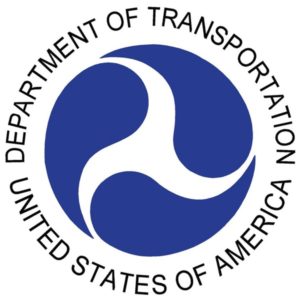 WASHINGTON — The U.S. Department of Transportation is proposing to suspend a rule allowing movement of liquefied natural gas by rail while it considers potential modifications to the rule.
WASHINGTON — The U.S. Department of Transportation is proposing to suspend a rule allowing movement of liquefied natural gas by rail while it considers potential modifications to the rule.
In a notice of proposed rulemaking published Monday in the Federal Register, the DOT’s Pipeline and Hazardous Materials Safety Administration says it would suspend the rule effective in July 2020 until June 2024, or until the completion of possible modifications to the rule.
The proposal indicates “uncertainty regarding the potential benefits and safety and environmental risks of rail transportation of LNG … has persisted longer than PHMSA anticipated when it issued the LNG by Rail final rule, and has in fact increased” as the result of a report issued earlier this year by the Transportation Research Board. Among other aspects, the report expressed concerns over incomplete forms of testing and risk assessment. The proposal also notes that changes in LNG markets have created more uncertainty about demand for shipment of LNG by rail, “and by extension, any potential benefits and public safety/environmental risks.”
The suspension will ensure no LNG is moved by rail until a rule regarding movement of the commodity reflects additional information from ongoing research.
Comments on the proposed suspension will be accepted through Dec. 23; procedures for commenting are outlined in the notice in the Federal Register.
The controversial LNG rule was finalized in June 2020 in response to an executive order issued in 2019 by President Donald Trump [see “DOT releases final rule for transport of LNG by rail,” Trains News Wire, June 22, 2020]. The notice in the Federal Register the rule spawned a number of legal challenges, which are in abeyance pending review of the rule.














The Biden Administration is pretty much doing what the Obama Administration did. Create disruption, uncertainty and operational blockades to the creation, use and distribution of fossil fuels inside the US.
By limiting supply, it forces prices up and makes alternate and more expensive forms of energy more viable. By making car use more expensive, it makes other forms of mobility more viable (like transit). And by extension, limiting access to railroads to alternate fossil fuels with raise their costs and make other types more attractive.
This has nothing to do with safety, logic, or reason. It’s about politics.
And transportation by truck is safer than by rail?
My exact sentiments. Rail is far safer than trucks rolling down the Interstates or public roads.
Question: Is FEC using LNG or CNG for propulsion? If LNG, will this shut down the trial locomotive(s)?
FEC uses LNG. They have a special use permit that predated the executive order.
https://fecrwy.com/news/blog-lng-operations/
1 cubic foot of propane contains 2,516 BTU and 1 cubic foot of natural gas contains 1,030 BTU,
Natural gas, when discharged into the environment is a greenhouse gas whereas propane is not classified as such. Propane is not toxic or damaging and will not harm the environment if it is released into the atmosphere, which is why it is not labeled as a greenhouse gas. Therefore, while propane will not contribute to pollution in its unused state if released, natural gas will.
Question: Is FEC using LNG or CNG for propulsion? If LNG, will this shut down the trial locomotive(s)?
Considering that liquefied petroleum gas is transported every day, what is the problem with lng?
Good question Justin. Is LNG more volatile than LPG? I know one difference that would be in LNG’s favor; LNG is lighter than an so any release will quickly rise and dissipate in the atmosphere. LPG is heavier than air and if release will spread across the ground where there is greater chance of encountering an ignition source. I recall the deadly explosion in the 70s at Decatur, Il. occurred because after the tankcars were punctured in the derailment, the gas flowed through the yard to a heater in a yard shack.